According to foreign media reports, while the autonomous vehicles have not really been put into commercial use, the craze for developing flying cars is on the rise. Toyota Motor Corporation of Japan said it is preparing to join the flight vehicle R&D project with the goal of achieving productization before the 2020 Tokyo Olympics and manned flights at the opening ceremony.
According to reports, Toyota will fund the Cartivator team to develop the world's smallest flying vehicle "SkyDrive". The funds before this project are mainly raised through network crowdfunding and other channels.
Cartivator is a dedicated team for the development of flying cars in 2012. The team currently has 30 employees, most of whom use their spare time to develop flying cars. They have also received help from industry professionals and companies, including Japanese drone experts and Masafumi Miwa, associate professor of mechanical engineering at Tokushima University in Japan, and TaizoSon, founder of Japan's leading online game developer GungHo Online Entertainment. According to reports, project leader Tsubasa Nakamura is an employee of Toyota Motor Corporation, but the flying car he developed is not a Toyota internal project, but an amateur interest project that won the entrepreneurial competition award.
SkyDrive is said to be the world's smallest flying car. In the event for entrepreneurs held in June 2015, the first public demonstration of the flying scene of the physical one-fifth prototype was received by the industry.
According to reports, SkyDrive is powered by a lithium-ion battery, equipped with three tires for ground driving, and a flying propeller at the four corners, each driven by a separate motor. The control team is ready to develop ways to control the body by moving the center of gravity. Both ground travel and flight speed are envisaged to be controlled between 100 and 150 km per hour. In terms of target cruising range, it is 50 kilometers on the ground and only about 5 kilometers when flying.
The person in charge of the project said that he plans to conduct manned flight tests before the end of 2018 and officially put the flying cars into commercial use in 2020, which is exactly the time for the Summer Olympics in Tokyo, Japan. They hope that SkyDrive will be used to light the Olympic flame of the Tokyo Winter Olympics. They still need to develop technology to control the propellers so that the vehicle maintains a stable attitude in the air.
In addition to Toyota Motor Japan, some US startups and traditional aircraft manufacturers are also active in this area. U.S. mobile car company Uber and Google co-founder Peiqi and others have supported this field. In April, Uber even said that by 2020, it will provide special vehicles or taxi services through flying cars in Dallas-Fort Worth and Dubai. Previously, Pezi also supported a startup technology company called Flyer, which mainly developed flying cars. In addition, the European aircraft manufacturer Airbus is also developing a flying car and plans to conduct a test flight in 2017.
In the face of urban traffic congestion and air pollution, electric vehicles and self-driving cars do not seem to be the only solution to the problem. The flying car can take off and land vertically, which can greatly reduce the traffic flow on the ground road and perfectly solve the traffic congestion problem. However, this will also trigger new air traffic control issues, such as how to manage a large number of vehicles flying low in the city. In addition, regulators are also worried about whether the flying car has sufficient safety, in case of falling, fear of people on the ground.
Fluorescence Spectrometer
Fluorescence spectrum can provide excitation spectrum, emission spectrum, fluorescence intensity, quantum yield, fluorescence lifetime, fluorescence polarization and other more physical parameters. These parameters reflect various features of the molecules , and through which can obtain more information of the tested molecular. CNI launched fluorescence Spectrometer with the characteristics of rapid analysis and accurate measurement, is usually used in crystal, rare earth elements and other fluorescence spectrum detection. Fluorescence spectrum analysis and measurement is special in high sensitivity, strong selectivity, micro samples, simple operation, etc.
â– Composition of Fluorescence Spectrometer

|
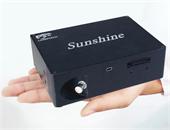
|
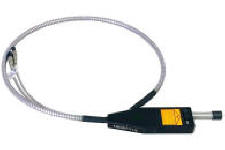
|
|
Laser Source
|
Fiber Optic Spectrometer
|
Probe
|
|
A variety of linewidth options at :
257, 360, 405, 473, 514.5, 532, 633, 660,
785, 830, 980, 1064 nm
|
High sensitivity;
Up to 80% quantum efficiency;
Spectral range 200- 1100nm
|
Excitation wavelength;
360, 405, 532, 785, 830 nm...
|
â– Fluorescence Spectrometer Solution
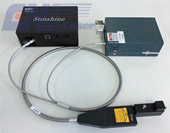
|
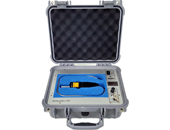
|
|
Combined Fluorescence Spectrum System
|
Portable Fluroescence Spectrometer
|
|
Fast connection, flexuble operation.
Wavelength is optional according on
Customer`s acyual requirements.
|
Simple measurement and easy operation,
extemal power supply vehicle- mounted charger,
Dustproof, anti- vibration, arti-glare interference...
|
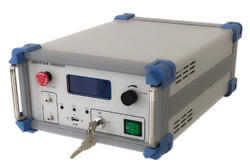
|

|
|
Desktop Raman Flurocence Spectrometer
|
Micro Flurocence Spectrum Measurement System
|
|
Build- in narrow line width laser- power
adjustable, high sensitivity spectrometer-
used for weak signal detection
|
It combines micro system and Raman
system which greatly tacilitates the Raman
micro area detection
|
â– Sample Fluorescence Spectrum

Combined Fluorescence Analyzer,Atomic Fluorescence Spectrometer,Fluorescence Spectrometer,X Ray Fluorescence Spectrometer
Changchun New Industries Optoelectronics Technology Co., Ltd. , https://www.lasersciences.com







